#ceratophrys cornuta
Explore tagged Tumblr posts
Text
It's Froggy Friday! Here are some frog dish images. Sister Legs and Sprout sat in one dish together.
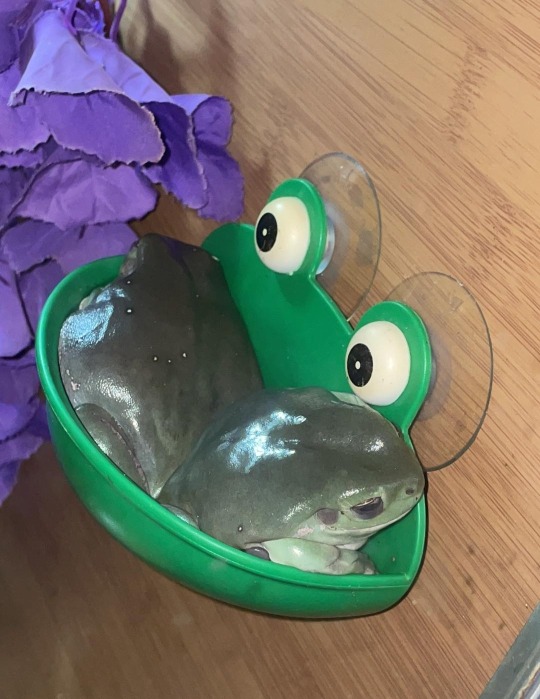
Also, brother Beans sat by himself in a frog dish while staring and being cute.



Lastly, Nugget took a bath.
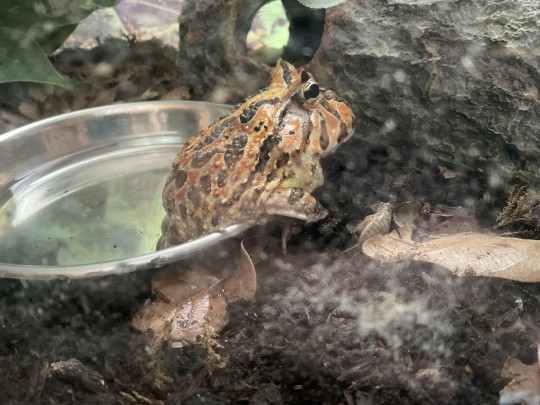
#froggy friday#frogs#australian green tree frog#dumpy tree frog#whites tree frog#pacman frog#ceratophrys cranwelli#ceratophrys cornuta
21 notes
·
View notes
Text

Amazonian Horned Frog (Ceratophrys cornuta), family Ceratophryidae, found in northern South America
photograph by George Grall
732 notes
·
View notes
Text

Two Surinam or Amazonian horned frogs (Ceratophrys cornuta) - Aloys Zotl - 1884 - via Christie's
366 notes
·
View notes
Text



What are these creatures? They are all Surinam horned frogs (Ceratophrys cornuta).
33 notes
·
View notes
Text
#FrogFriday:

Aloys Zötl (Austrian, 1803-1887) Two Surinam or Amazonian Horned Frogs (Ceratophrys cornuta), 1884 watercolor, double pen & black ink framing lines 16 1⁄8 x 20 in. (40.9 x 50.8 cm) via Christie's
"The bestiary of the untypical Austrian artist, Aloïs Zötl, is highly varied. The sale of one hundred and fifty watercolours from the artist’s studio included some six drawings of animals from the amphibian family (Hôtel Drouot sale, Paris, 19 December 1955, lots 39-44), which did not however include this piece. Even when painting animals of which he had direct visual experience, the artist drew his inspiration from existing iconography, for example, engraved illustrations from natural history treatises (G. Mariotti, Le bestiaire d’Aoys Zötl (1831-1887), Milan, 1979, p.15). A similar watercolour of two frogs in an aquatic landscape is held in a private collection (V. Francès, Contrées de Aloys Zötl, Paris, 2011, pp. 72-73, ill). These two Amazonian or Surinamese frogs (with the female in the foreground and the male in the background), are approximately fifteen to twenty centimeters long, carnivorous, and eat prey including lizards, small frogs, and other mammals."
#animals in art#european art#19th century art#painting#watercolor#Austrian art#Aloys Zötl#scientific illustration#natural history art#historical sciart#sciart#frog#frogs#pair#horned frog#Surinam Horned Frog#Frog Friday
13 notes
·
View notes
Text
Okay, okay, not to highjack this post because I think these are all great ideas, but I wanted to make my own classification...
Hyloscritus tolkieni for high fantasy:

Ceratophrys cornuta as comedy (because the contrast between their imposing look & their behavior is highly comedic imo; sometimes it's the devil itself, sometimes it's a pancake):


Pipa pipa for Lovecraftian horror:

youtube
Also, may I offer... Rhacophorus nigropalmatus as technofantasy (something like Dragonriders of Pern maybe?)

Nymphargus balionotus as surrealism maybe?

Telmatobius culeus as body horror:

Atelopus barbotini as magic realism!


Hot damn. Great question, I'd love to tell you.
High Fantasy
Look, this rainfrog is called Breviceps bagginsi, so I don't have a lot of choice, now do I?
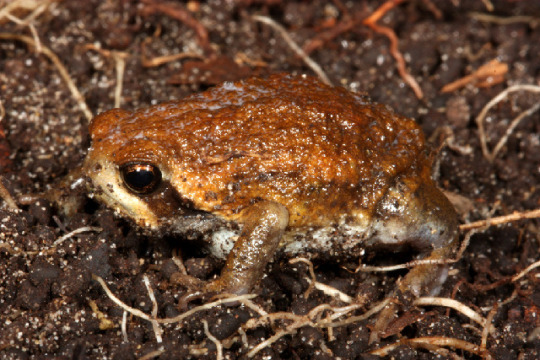
[src]
Also, I would go with them to the end. Into the very fires of Mordor.
Low Fantasy
Phyllomedusine hylids have a certain weird clown marionette vibe to them. Just look at these Pithecopus rohdei.

[src]
Lovecraftian
The male Rhinoderma darwinii raises his tadpoles in his vocal sac.
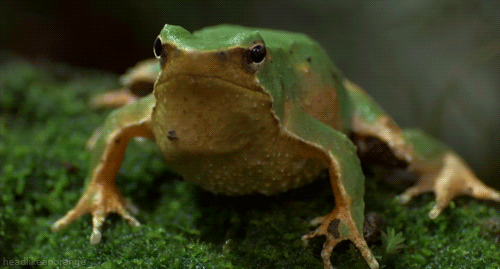
GIF by cassiopeias-dreams
Sci-Fi
Gephyromantis pseudoasper sometimes wear handsome stripes—very Space Age™
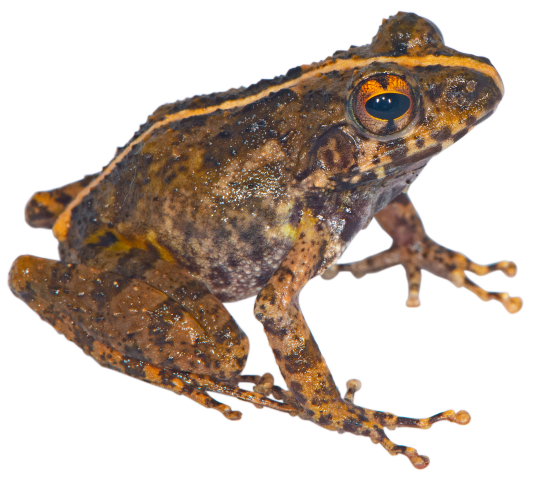
But more importantly, their calls evoke a battle with laser-blasters.
I filmed this calling male in 2017 at an obscene hour of the morning.
Horror
Trichobatrachus robustus, aka the Hairy Frog, has flanks and thighs covered in weird, hair-like outgrowths that increase oxygen exchange over its skin, and BREAKS ITS FINGERS TO STAB YOU WITH CLAWS MADE OF BONE
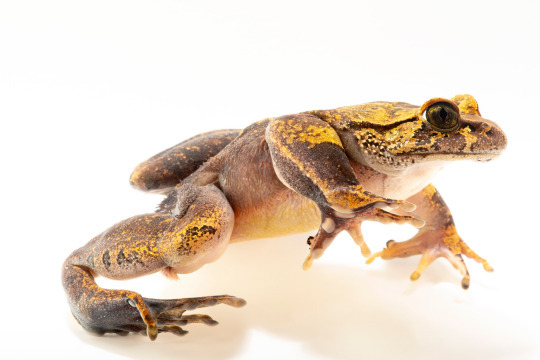
[src]
Romance
Breviceps males physically glue themselves to the back-ends of females, and if that's not romance, I don't know what is.

[src]
Comedy
Nyctimantis arapapa are probably amongst the funniest-looking frogs out there.

[src]
Adult
The 'poly' in Polypedates may be a double entendre
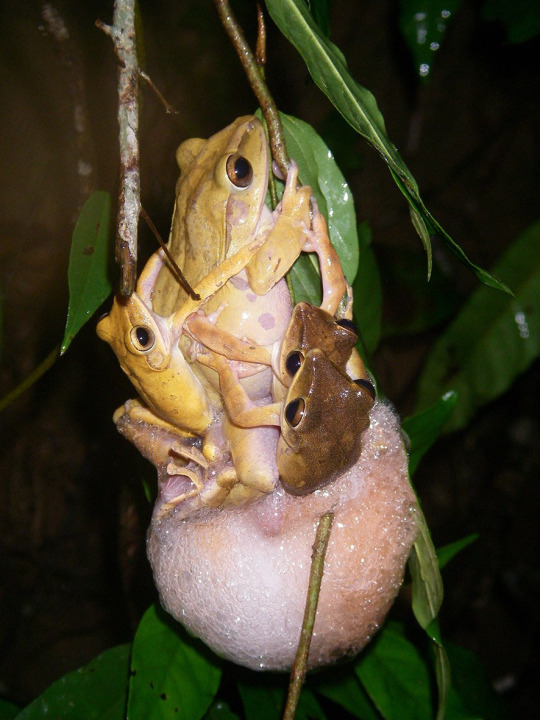
[src]
Crime and Mystery
Calyptocephalella gayi is a Galaxy Brain frog.

[src]
Speculative
Myobatrachus gouldii is basically what would happen if you decided to try to build a turtle, but you only had frog pieces in the kit.
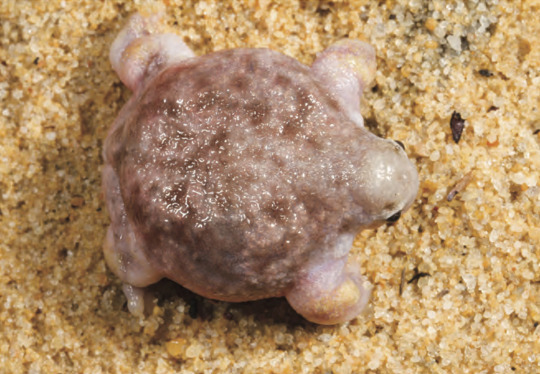
[src]
#not to get on your turf sir BUT!#also i think darwin's frog = comedy#& the hairy frog has more of a biopunk vibe to me but hmmm#frog discourse#frogs#amphibia#animals#Youtube
4K notes
·
View notes
Text



Surinam Horned Frog (Ceratophrys cornuta)
7 notes
·
View notes
Text
How Can We Do Better By Pacman Frogs?
Pacman frogs (genus Ceratophrys) are one of the most common pet frogs, and for good reason! They’re large, personable frogs that come in a wide variety of morphs and can live up to 10 years. There are eight species in the genus, though only three are common in captivity (C. cranwelli, C. ornata, C. cornuta), as well as a hybrid of C. cranwelli and C. cornuta usually labelled as a “fantasy pacman frog.” Occasionally you may see some of the other species for sale, but not nearly as often. This article focuses on the three most common species of pacman frog, excluding the hybrids.
This article is not intended to be used as a care sheet. Please do further research of your own to figure out the best way to care for your pet pacman frog.

Visual differences between the three common pet pacman frogs, plus the ‘fantasy’ hybrid (source)
Unfortunately, in my experience, out of all the common pet frogs, pacman frogs seem to suffer the most from minimalistic husbandry practices. Perhaps this is due to their reputation as ‘pet rocks’- they are nocturnal sit-and-wait predators, so keepers are unlikely to see them out and about during the day. A common sight in pacman frog groups and forums is a bin or tank of no more than 10 gallons, with just some dirt, a heat mat, and a large water dish. But is that really the best we can do for them?
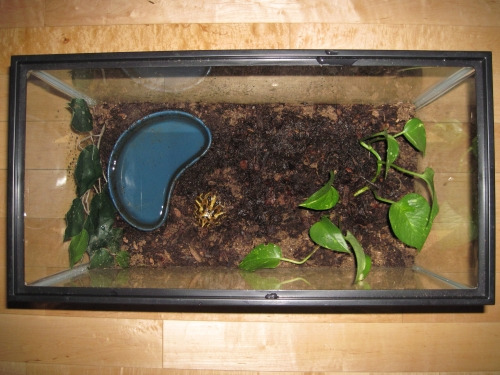
An example of a fairly typical 10 gallon setup for a pacman frog. (source)
In order to answer that question, we’ll first need to delve into their lives in the wild.
In the wild, the ranges of cranwelli, cornuta, and ornata are for the most part separate. Cranwelli is found in the dry chaco region, which includes parts of Argentina, Paraguay, Bolivia, and Brazil. Ornata is found in Argentina and Uruguay, ranging to the coast. Cornuta is found much further north and has the largest range, including Brazil, French Guiana, Suriname, Colombia, Peru, and Bolivia. There’s some possible overlap between cranwelli and ornata in Argentina.

Comparisons from Berkeley Mapper of pacman frog distribution. Orange is range as listed by the IUCN, and the blue dots are amphibiaweb records of collection sites.
Most care sheets and keepers treat these species as interchangeable as far as care requirements, but I’m a little more skeptical. Let’s go species by species through habitat information!
Ceratophrys cranwelli
The most common species of pacman frog lives in the hot, semiarid Gran Chaco region, which contains mainly dry thorn forests, savannas, and low hardwood forests. Much of the water is seasonal, but there are two permanent rivers. When it’s hot and dry, cranwelli will burrow into the soil and grow a protective layer of skin, then aestivate until the climate becomes more suitable for them again. Soil is primarily sand and clay-based. Average temperatures across the region range from 60-85 F, with average humidity ranging from 50-75%.

One of the types of habitat in the Gran Chaco in Paraguay (source)
Ceratophrys ornata
These guys live in the Pampas region of Argentina, in subtropical grasslands and seasonal wetlands. Vegetation is primarily grasses and shrubs with few trees. Humidity seems to stay around 70-80% on average. The yearly average temperature is just around 65F, with average lows around 55 and average highs around 75. Soil is described as fertile. The frogs are primarily found around the bodies of water where they breed.

Temperature information for three locations in the Pampas region

A view of the Pampas (source)
Ceratophrys cornuta
The third of the common pet pacman frog species is found in the Amazon rainforest and the Amazon basin. The yearly average temperature is around 77 F but can reach up to the 90s during the day and down to the upper 60s/lower 70s at night. Humidity in the amazon rainforest averages 77% in the dry season and 88% in the wet season, according to the WWF. One study on the biology of cornuta cites the forests where they live as either terra firma or inundated forest and the soil asloam mixed with silt and/or clay. Individuals were usually found partially burrowed under leaf litter, with their backs near roots or logs. They mostly moved around during nights when there had been rainfall in the previous 24 hours.
In my opinion, the differences in habitat between the three species indicates that captive Ceratophrys frogs should be kept in somewhat different conditions in captivity as well. Cornuta would likely do well with plenty of leaf litter to burrow into, and seems to like the highest humidity of the three. Cranwelli seems to need the least humidity, and would likely appreciate some plant or wood cover, such as scrub vegetation. Ornata seems to need higher humidity than cranwelli, but perhaps not as high as cornuta. Their primary vegetation in the wild are grasses, so it would be recommended to mimic that in terraria. The different species may do better at different temperatures as well. I would recommend doing further research on your own on temperatures in their native habitats before deciding what temperature to keep your own pacman frog at.
In general, the small terrariums pacman frogs are typically kept in are inadequate. While a 10 gallon may be fine for growing out a young baby, many of whom are irregular eaters until adulthood, These frogs can grow anywhere from 2-6 inches, possibly more, depending on species and gender. I recommend a minimum of a 20 long (footprint of 360sq in) for male pacman frogs and a 40 breeder (footprint of 640sq in) for female pacman frogs. Of course, you can always go larger- I keep my male ornata in a 40 breeder and I have never felt the space was wasted.
All pacman frogs share some basic needs: enough substrate to burrow all the way into, a large water dish that they can soak their entire body in, cover of some sort be it hides or plants, a heat gradient, and access to UVB.
Most keepers recommend a heat mat taped to the side of the tank for providing supplemental heat. You should never use a heat mat on the bottom of the tank as pacman frogs will burrow to cool themselves down when it gets too hot. Overhead heat would be ideal, and there are many ways to go about that, each with its own pros and cons. Unless your house is particularly cold, your frog should be fine with a nighttime temperature drop down to the mid 60s/lower 70s.
UVB supplementation is controversial in the herp hobby for many species, and pacman frogs are no exception. They may be nocturnal, but that only means they are primarily active at night and does not preclude them from being exposed to sunlight. I would consider them to be a part of Ferguson Zone 1 as outlined in Ferguson et al. (2010). Animals in this zone are cryptic baskers, typically crepuscular or nocturnal. They would not need high levels of UVB, but appropriate use of a low output UV bulb is unlikely to be harmful provided the frog is able to avoid the light should they choose. I personally use a reptisun T8 5.0, but any light with a similar output used at the manufacturer recommended distance should be safe. Make sure your pacman frog is able to hide from the light if they want to by providing them with hides, plants, pieces of wood, etc.
Ultimately, we can do better by pacman frogs by simply treating them like more than pet rocks. Give them space to move around, do research into the native habitat of the species you own and do your best to mimic it in your terrarium. Feed them a variety of foods - these guys can and do eat almost anything from ants to other frogs and reptiles. Give them more than just dirt and a water dish. Make sure to only purchase captive-bred individuals. These frogs will never race around their tank or be able to be kept happily with other frogs, and you may almost never see them move during the day, but that doesn’t mean they don’t use their space in their own way.
The way I see it, you can either provide space and enrichment that they might not use, or you can deprive them of space and enrichment that they may benefit from. I think the former is preferable to the latter.
Sources, References, and Further Reading
Cranwelli
https://www.britannica.com/place/Gran-Chaco/
https://www.iucnredlist.org/species/56338/11464257
http://www.faunaparaguay.com/ceratophryscranwelli.html
Ornata
https://www.britannica.com/place/the-Pampas
https://www.iucnredlist.org/species/56340/11464790
https://en.wikipedia.org/wiki/Climatic_regions_of_Argentina#Statistics_for_selected_locations_5
Cornuta
https://galapagosinsiders.com/travel-blog/climate-weather-amazon-rainforest-temperatures/
https://www.jstor.org/stable/3892875?seq=1
https://www.iucnredlist.org/species/56337/11464093#habitat-ecology
https://wwf.panda.org/knowledge_hub/where_we_work/amazon/about_the_amazon/
General
https://bioone.org/journals/south-american-journal-of-herpetology/volume-9/issue-2/SAJH-D-14-00008.1/On-the-Diet-of-the-Frogs-of-the-Ceratophryidae/10.2994/SAJH-D-14-00008.1.short
https://www.jzar.org/jzar/article/view/150
#reptiblr#amphiblr#pacman frog#ceratophrys#ceratophrys cornuta#ceratophrys ornata#ceratophrys cranwelli#my guides
250 notes
·
View notes
Text
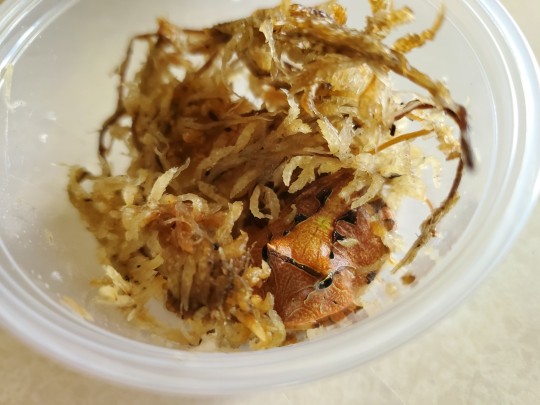



This is Pudding, my new baby Surinam horned frog 🐸
Ceratophrys cornuta
#frog#frogs#i love frogs#frogposting#pacman frog#frogs of tumblr#horned frog#surinam horned frog#ceratophrys cornuta#ceratophrys#pet#pets#my pets#cute pets#pets of tumblr#exotic pets#adorable pets#adorable#cute animals#cute frogs
238 notes
·
View notes
Photo

590 notes
·
View notes
Text
Happy Froggy Friday! Brother Fern sat nicely on the skull.

I'd also like to show off my cranwelli x cornuta hybrid who is a useless lump of a frog with short sad limbs.
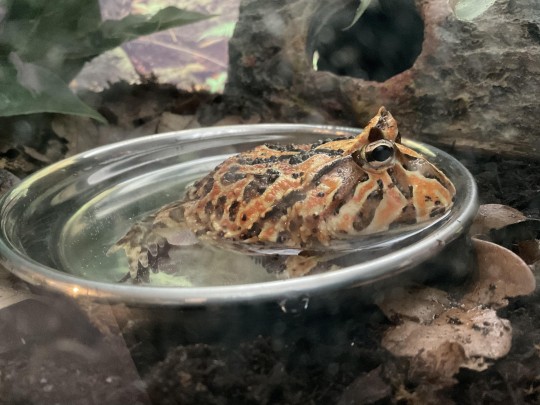

His name is Nuggie, and he often refuses to eat anything that isn't his favorite food, goes on random hunger strikes, is really bad at shedding his skin and starts hyperventilating every time we come near him. We really love him a lot. He just needs a lot of help because he's extra useless.
#froggy friday#frogs#australian green tree frog#dumpy tree frog#whites tree frog#pacman frog#ceratophrys cranwelli#ceratophrys cornuta
13 notes
·
View notes
Text


Surinam Horned Frogs (Ceratophrys cornuta), family Ceratophryidae, Suriname
photographs by Marc Vaillant
1K notes
·
View notes
Text
Animal of the Day!
Surinam Horned Frog (Ceratophrys cornuta)

(Photo by Bernard Dupont)
Conservation Status- Least Concern
Habitat- Amazon Basin
Size (Weight/Length)- 20 cm
Diet- Insects; Small mammals; Small reptiles; Amphibians; Fish
Cool Facts- Have no fear, the surinam horned frog is here. This bulky lad’s mouth is wider than their head and capable of eating animals as big as mice and fish, swallowing them whole. These frogs are considered relatively aggressive, attacking, and eating, other frogs and their own tadpoles after the mating season. Their bright colors, ranging from orange to green, help to blend in with the thick leaf litter of the Amazon rainforest. These frogs are highly valued in the pet trade for their looks, often being captive bred but some are illegally collected from the wild. Chytrid fungus is also a huge issue with these large frogs, eliminating the ability for the frog to breath through its skin.
Rating- 12/10 (Eye horns are just for decoration.)
#Animal of the day#Animals#Amphibian#Frogs#Sunday#February 26#Surinam horned frog#biology#science#conservation#the more you know#Frog week#i love frogs
220 notes
·
View notes
Photo
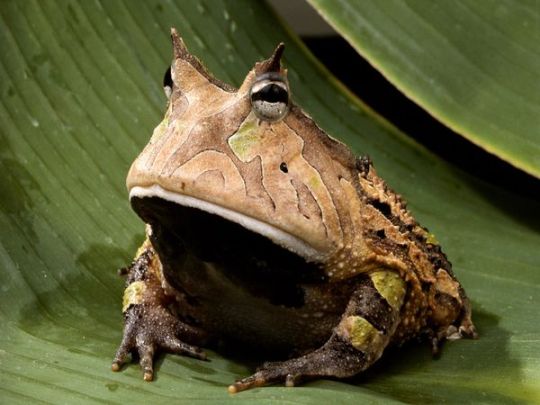
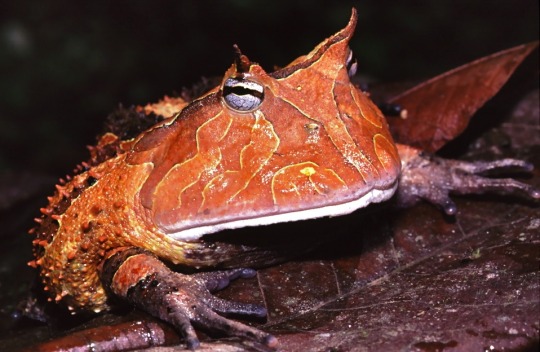
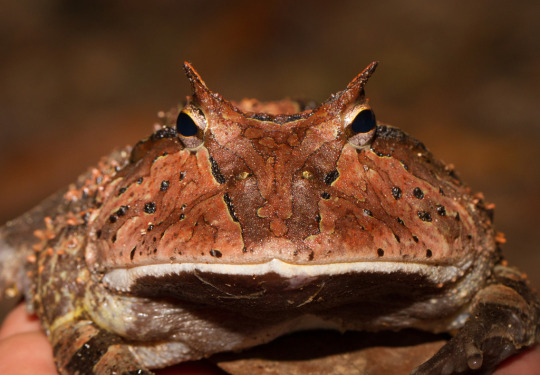
Honk for the Amazon Horned Frog
The Amazon horned frog, or the Surinam horned frog (Ceratophrys cornuta) is a medium-sized species of frog found in the tropical forests of South America. They tend to be wide and bulky, but only grow to be about 20cm in length and weigh 0.5kg. Color schemes can range from tan to green to brown, and this frog blends in very well with the leaf litter on the forest floor. The Amazon horned frog’s name comes from two horn-like protrusions over the eyes, although these are more likely meant to break up the frog’s silhouette than to be used for fighting. This species is also sometimes mistaken for a toad due to the bumps over its skin.
Like all frogs and toads, C. cornuta begins its life as an egg. After a male attracts a female by calling and the two mate, the male helps deposit the fertilized eggs onto the female’s back. The usual clutch size ranges from 300-600 eggs. The female then searches for an appropriate place-- usually an ephemeral pool-- for the eggs to develop into tadpoles, a process that takes anywhere from 3 to 25 days after being fertilized. Tadpoles are highly aggressive and will fight each other as they develop. It takes three months for tadpoles to grow into fully-formed frogs, although they do not become sexually mature for another 3 or 4 years.
In their day-to-day life, Surinam horned frog spends its time hiding in leaf litter or under fallen logs. It is an ambush predator, to which its appearance lends itself well. It’s predation actually makes it one of the most distinguished frogs, as they have one of the largest mouth-width to body length ratios. This exceptionally large mouth enables them to consume a wide variety of prey, including mice, fish, frogs, lizards, and tadpoles of their own species. Common predators consist of birds and snakes. Against each other, Amazon horned frogs are incredibly violent and will attack each other with their sharp teeth. They will also use those sharp teeth against predators or perceived threats.
Conservation status: Listed as Least Concern by the IUCN; however, they are currently threatened by heavy habitat loss and capture for the pet trade.
Photos
George Grall
Bernard Dupont (via Wikipedia)
Cullen Hanks (via iNaturalist)
#amazon horned frog#anura#Ceratophryidae#south american horned frogs#common horned frogs#frogs#amphibians#tropical forests#tropical forest amphibians#tropical rainforests#tropical rainforest amphibians#wetlands#wetland amphibians#south america#Amazon Rainforest#animal facts#biology#zoology
171 notes
·
View notes
Text
#WorldFrogDay: Maybe this Surinam Horned Frog (Ceratophrys cornuta) wouldn't look so happy if it could read what naturalist George Shaw wrote about it in its description...

"Horned Frog" from The Naturalist's Miscellany, v.3, pl. 76 (1791-2) by George Shaw (English, 1751-1813). Biodiversity Heritage Library.
Here's what Shaw said: "Should inquiry be made, which is the ugliest animal yet known to exist? The creature here represented might perhaps with justice be proposed as an answer: an animal of such prodigious deformity as even to exceed in this respect the Surinam toad...." ☹️
#frog#Surinam Horned Toad#Horned Toad#Pacman Frog#herpetology#zoology#The Naturalist's Miscellany#George Shaw#natural history art#scientific illustration#sciart#historical sciart#zoological illustration#Biodiversity Heritage Library#illustration#book plate#lithograph#18th century art#British art#European art#animal holiday#World Frog Day#animals in art
8 notes
·
View notes
